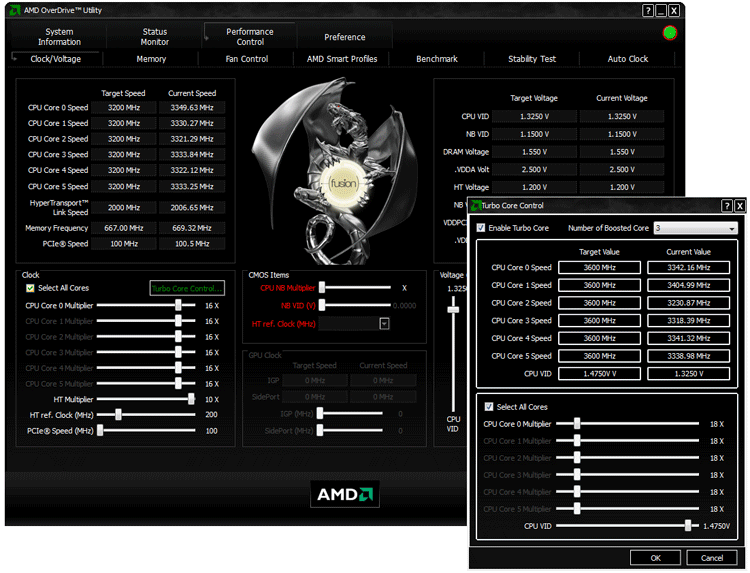- Manual Fan Control Pc
- Manual Fan Control Laptop
- Surface Pro 3 Manual Fan Control
- Ebay C5 Corvette Manual Fan Control Switch
I'd like to enable AMD Overdrive and Manual Fan Control in Catalyst Control Center and reduce fan speed to minimum (20%) but I'm afraid what happens if I start using the card heavily and forget to disable Manual Fan Control.
Will it disable by itself when temperature reaches some dangerously high value or will the fan will stay obediently at low speed and GPU will crash or gets damaged due to overheating?
Oct 12, 2013 Everything in AMD Overdrive is greyed out, but I can adjust anything else. And no, there is no key or padlock option to click, and I. You must enable AMD OverDrive; Logging out of RAIDXpert.22. How to Use Overdrive in the AMD Catalyst Control Center. AMD OverDrive in Catalyst Control Center offers you.
fixer12341 Answer
Why do you want to reduce it's speed to 20%? If it's running higher there's a very good reason... Your card is HOT!
Forcibly reducing its speed will cause the temperature to rise and i'm fairly confident because you've specified the speed it will happily overheat and crash. Leave it on auto if you want it to be the quietest, if it's still too loud then look at a 3rd party cooling solution. Some of these coolers will work more efficently, some almost cooling enough passively for low load/idle times... Hence very low fan speeds (and less noise).
HaydnWVNHaydnWVN
Not the answer you're looking for? Browse other questions tagged fanamd-radeoncoolingamd-catalyst or ask your own question.
Related Articles
- 1 AMD Overdrive Failed to Start
- 2 What Causes a Computer Cooling Fan to Run Continuously?
- 3 Overclock an ATI Radeon HD 3650
- 4 Which Is Better: Overclock Via Multi or FSB?
The Auto Clock function in the AMD OverDrive program takes a lot of the guess work out of configuring a computer's overclocking to get optimal performance without damaging the system. Overclocking a computer safely involves a lot of gradual settings adjustments and stability tests. The Auto Clock function simultaneously runs stability tests while increasing the computer's clock speed until it finds the fastest settings that don't overheat the computer.
Manual Fan Control Pc
Overclocking Your Computer
The term 'overclocking' refers to increasing a computer component's operation speed beyond what the manufacturer intended. It's common for power users to overclock a computer's processor, GPU and RAM to squeeze additional performance out of hardware. A user can overclock components by adjusting the motherboard's frontside bus clock ratio in BIOS or through a program like OverDrive. Overclocking is commonly associated with computer gaming and carries the risk of damaging or destroying computer hardware.
Using AMD OverDrive
AMD OverDrive is a Windows program with which you can control overclocking settings. Before programs like OverDrive, overclock settings had to be configured before the operating system booted via the computer's BIOS menu or by using adjustable jumpers on the motherboard. Bad overclock settings can cause system instability and prevent the operating system from loading. With a program like OverDrive, there's no need to reboot between each setting adjustment -- but bad settings can cause the system to force a reboot. AMD OverDrive can configure CPU, GPU and RAM overclock settings but will only work with specifically supported AMD-based CPUs and motherboards.
Auto Clock Automated Configuration
The Auto Clock function works by increasing the CPU clock speed by a pre-configured interval and running a stability test before increasing the CPU clock speed again by the pre-configured interval. Auto Clock will continue to run the test until the CPU fails the stability tests or starts to operate above the CPU's safe temperature range. The Auto Clock function will stop running tests when it has determined the optimal system settings that can be applied to the computer. The system may crash during the test because of a particularly unstable setting. Additionally, the processor will operate at the highest end of its safe operating range throughout the test, but Auto Clock will stop testing if the CPU goes beyond the safe range.
Is Overclocking Safe?
Using Auto Clock setup and the settings provided by the test will improve system performance, but at a cost: additional heat. The additional heat can damage the system, so overclocking is often accompanied with enhanced cooling systems to lower the CPU's temperature and increase AMD OverDrive's ability to overclock the CPU without running into heat problems. While the CPU won't overheat and break during the test, the settings may put the CPU at risk if the room temperature increases. The more the room temperature increases from when the Auto Clock function settings were determined, the greater the risk. Additionally, running the CPU in an overclocked state without extra cooling will make the CPU produce more heat in normal use, which can lead to more wear and tear on the part and eventually break it.
References (4)
Resources (2)
About the Author
Dan Stone started writing professionally in 2006, specializing in education, technology and music. He is a web developer for a communications company and previously worked in television. Stone received a Bachelor of Arts in journalism and a Master of Arts in communication studies from Northern Illinois University.